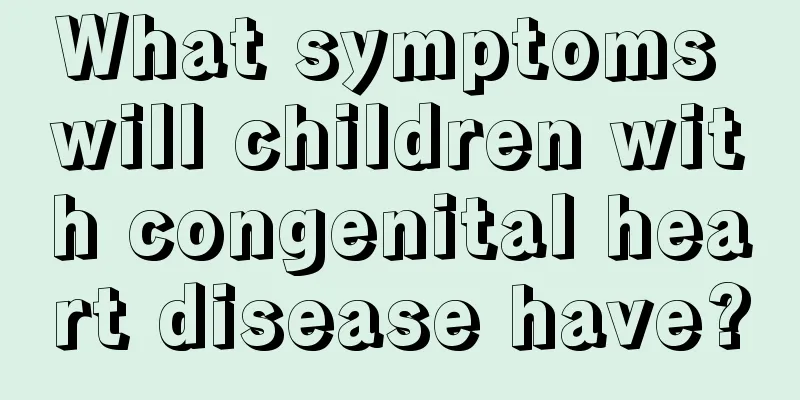What symptoms will children with congenital heart disease have?

|
Although the current medical level is relatively advanced and some congenital diseases can be detected during pregnancy, some people may miss some congenital diseases because of inadequate prenatal examinations or careless prenatal examinations. Then after the child was born, we discovered that the child had some abnormalities. So, what are the symptoms of a child with congenital heart disease? 1. Cyanosis: Cyanosis is a prominent manifestation of cyanotic congenital heart disease. It may persist after birth or become gradually apparent three to four months after birth, and is most obvious on the lips, nail beds, and tip of the nose. 2. Heart murmur: Heart murmurs can be heard in most congenital heart diseases. This murmur is loud and rough, and in severe cases may be accompanied by chest tremors. 3. Poor physical strength: Due to poor heart function, insufficient blood supply and hypoxia, critically ill children have difficulty feeding in infancy, stop sucking after a few sips, have shortness of breath, are prone to vomiting and sweating profusely, like to be held upright, and older children are unwilling to move and like to squat. They are easily fatigued after activities and have paroxysmal dyspnea. Those with severe hypoxia often faint suddenly while breastfeeding, crying or defecating, and are prone to heart failure. 4. Susceptible to respiratory tract infection: Most congenital heart diseases are prone to repeated respiratory tract infection due to increased pulmonary blood. 5. Heart failure: Neonatal heart failure is considered an emergency. Most of the time, it is due to severe heart defects in the children. Its clinical manifestations are due to congestion in the pulmonary and systemic circulations and reduced cardiac output. The children are pale, breathless, have difficulty breathing and tachycardia, and their blood pressure is often low. Gallop rhythm can be heard and the liver is enlarged, but peripheral edema is rare. Children with congenital heart disease not only have the above-mentioned symptoms, but also develop much more slowly than their peers. If the child is found to have the above symptoms after birth, the child should be taken to the hospital for examination in time. Only after early diagnosis can treatment be given early. The earlier the treatment, the better the prognosis of the child. |
<<: What are the symptoms of congenital cerebrovascular malformations in children?
>>: What are the symptoms of congenital heart disease in children?
Recommend
What should I do if my baby gets prickly heat?
In summer, babies will get prickly heat, which is...
What is the correct way to brush teeth for children?
Children nowadays do not take good care of their ...
How can primary school students improve their physical fitness?
Primary school students are in the stage of physi...
Rectal medication for children's colds?
It is very common for children to catch a cold. C...
What is the reason for the baby's yellow and watery stool?
I am a professional pediatrician. Many friends wh...
How to distinguish and treat colds, wind-colds and wind-heats in children?
There may be different situations when children c...
When do deciduous teeth fall out?
The first tooth that grows out of a baby is calle...
What should I do if my child has a bad digestive system?
If a child has a poor digestive system, we recomm...
What to do if children's phimosis is too long
Phimosis in children is very common clinically. T...
How do you know if your baby is zinc deficient?
We all know that zinc deficiency in babies is a v...
What should children pay attention to when running?
When children first start learning to run, their ...
How to treat gynecological inflammation in children
In our lives, most women who suffer from gynecolo...
What to do if children have trouble sleeping
Both adults and children are reluctant to go to b...
What can children eat to get rid of phlegm in their throats?
I believe that many parents have encountered the ...
What to do if your baby spits up milk and has phlegm
A baby's health concerns the life of a family...









